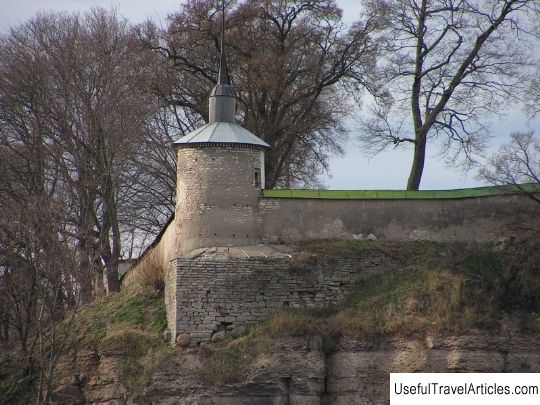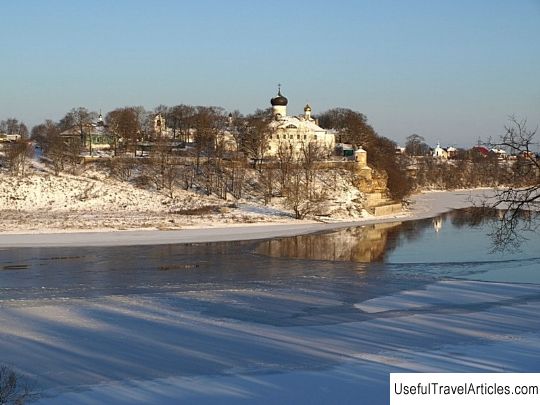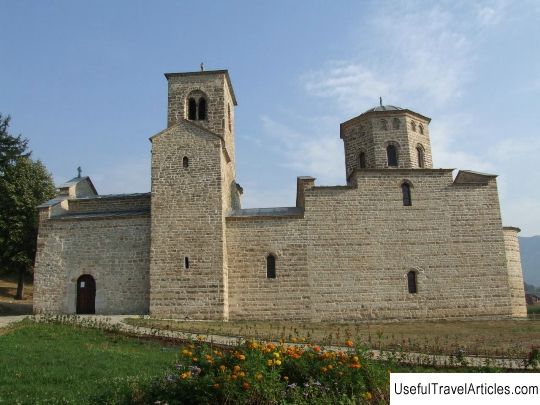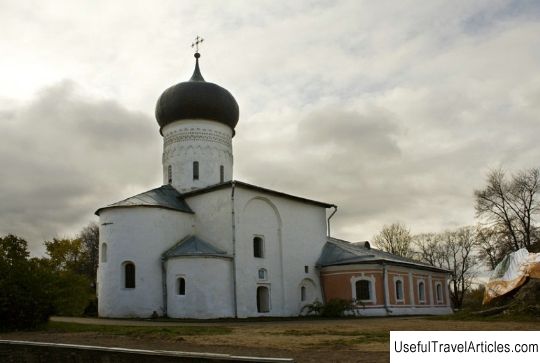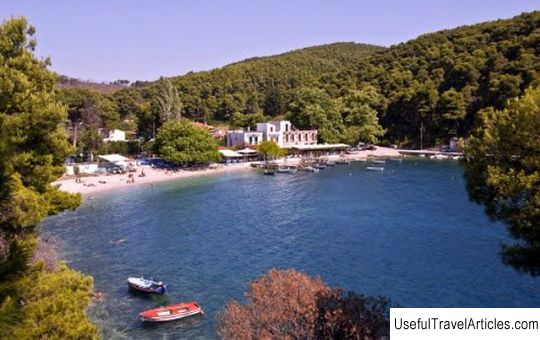Snetogorsk monastery description and photos - Russia - North-West: Pskov
Rating: 7,9/10 (879 votes) 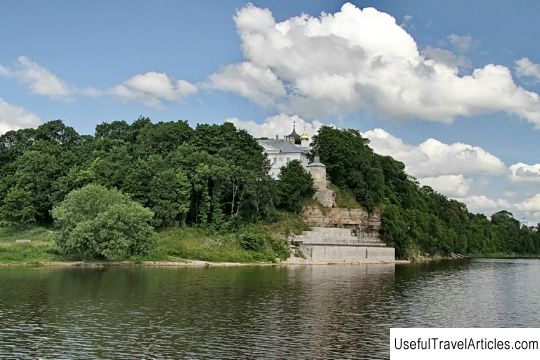
Snetogorsk monastery description and photos - Russia - North-West: Pskov. Detailed information about the attraction. Description, photos and a map showing the nearest significant objects. Photo and descriptionSnetogorsk Monastery is an active nunnery in Pskov. It is located about 4 kilometers from the city center, on the high bank of the Velikaya River. The place where the monastery stands is called Snyatnaya Gora. The name of the mountain comes from the word "snet", that is, "smelt" - a small fish for which Pskov is famous. The ensemble of the Snetogorsk monastery consists of the Cathedral of the Nativity of the Most Holy Theotokos, the refectory church of St. Nicholas the Wonderworker, the Bishop's house, the ruins of the bell tower with the Church of the Ascension of the Lord, the Holy Gates and the monastery fence (its perimeter is 420 meters). The Snetogorsk monastery experienced many troubles: enemy attacks and devastation from the Polish army in 1581 and 1612, from the Swedish troops of Gustav Adolf in 1615, terrible fires in 1493 and 1824. In 1804, the monastery was abolished, and it became the place of spiritual activity of Evgeny Bolkhovitinov, Archbishop of Pskov, the creator of works on Russian history. In 1825, Alexander Sergeevich Pushkin visited the Snetogorsk monastery. During the Soviet years, the monastery was a rest home. At that time, the Snetogorsk pillar (erected in the 18th century), which was 63 meters high, was destroyed. In 1993 the monastery became part of the Pskov diocese. Currently, more than 60 sisters live in the monastery, and about 100 people with the church clergy and workers. Abbess Lyudmila is in charge of the monastery. The main construction stage in the history of the Snetogorsk Monastery is the erection of stone churches and civil buildings in the 1st quarter of the 16th century. Not far from the most ancient and main shrine of the monastery - the Cathedral of the Nativity of the Virgin, built in 1311, the Nikolskaya Church was erected in 1519, which has survived to this day. Around 1526, the Ascension Church was built, reconstructed and built on with a high tent in the 17th century. Unfortunately, the church has not survived to this day. The main temple of the monastery is the Cathedral of the Nativity of the Blessed Virgin Mary, built according to the architectural model of the Transfiguration Church of the Mirozhsky Monastery. As mentioned above, it was erected in 1311 and painted in 1313. The Nativity Cathedral is famous for its frescoes. When creating them, local craftsmen used almost all the tones of the local mineral paints with the dominance of the famous "Pskov Cherry", which gives the paintings a special, warm flavor. The Snetogorsk wall painting represents the initial heyday of the Pskov fresco. The painting of the Pskov masters is characterized by a bright, picturesque manner of execution and a free interpretation of religious subjects. The construction of the frescoes is extraordinarily vivid. On the north wall there is a fresco "Assumption", above the doorway to the altar - the scene "Introduction to the Temple". The fresco "The Last Judgment" makes a vivid impression, depicting not only sinners and mythical heroes, but also fantastic animals. The masters have developed their own bold style of painting - whitewash highlights ("gaps"), which revived the figures and made them dynamic. By now, the color scheme of the frescoes has changed a lot, fragile colors have faded, the azure background has changed. But if you look closely at the frescoes, the idea of their creators will be clear. By now, the color scale of the frescoes has changed a lot, fragile paints have faded, the azure background has changed. But if you look closely at the frescoes, you will understand the idea of their creators.         We also recommend reading Admiralty description and photo - Ukraine: Nikolaev Topic: Snetogorsk monastery description and photos - Russia - North-West: Pskov. |
